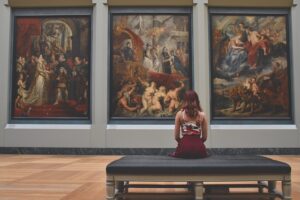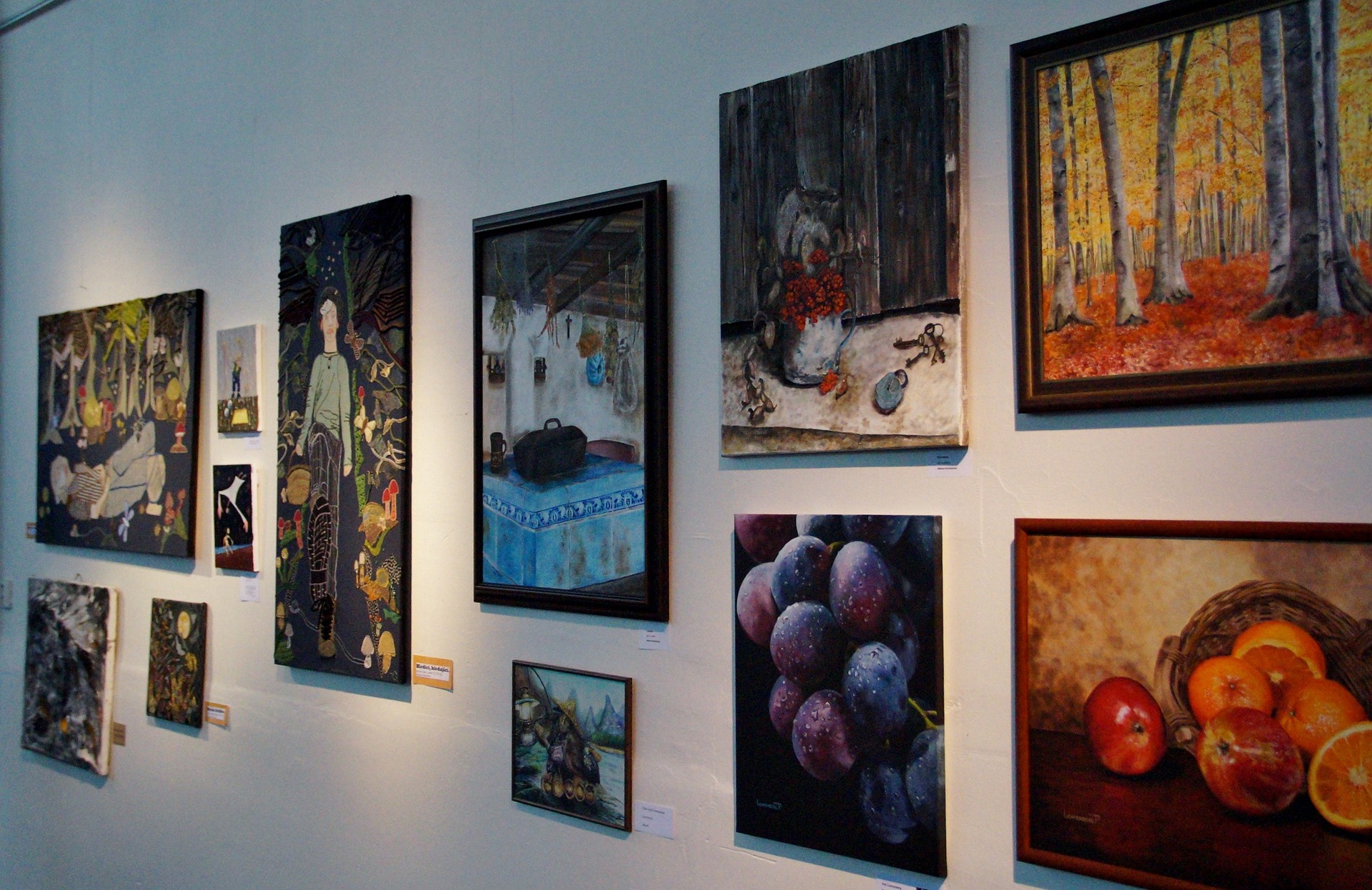Art Gallery 11 One
Typically, an art gallery is a building or room in which artwork is shown. But in Western cultures, they were also long, covered passages along walls.
Collaboration is king
 Getting an artist to work with you is a two way street. The best collaborations are ones that rely on both sides of the table. While the art world is full of art galleries, the most important role is often played by the artist. Fortunately, many of them are willing to collaborate. You might even see a collaboration in action in the near future. A few examples include Phillip King and Alexandre da Cunha, who will be showing off their respective creative wares at the Royal Society of Sculptors in London, and Bentley, who has said yes to the occasional collaborative opportunity.
Getting an artist to work with you is a two way street. The best collaborations are ones that rely on both sides of the table. While the art world is full of art galleries, the most important role is often played by the artist. Fortunately, many of them are willing to collaborate. You might even see a collaboration in action in the near future. A few examples include Phillip King and Alexandre da Cunha, who will be showing off their respective creative wares at the Royal Society of Sculptors in London, and Bentley, who has said yes to the occasional collaborative opportunity.
The most notable collaboration is a collaborative effort between Phillip King and Alexandre da Cunha, in which they will be intertwining their creative practices in September. The following year, the duo will be making their mark on the national stage. You might even be lucky enough to spot them in person.
The most notable collaboration of all is one that took place over twenty years ago. For a brief stint, the late street artist SAMO was a part of the art scene in New York. While the artist was not in the same league as a Picasso or a Jackson Pollock, his contributions to the arts were significant.
The most gratifying moment came when a few of the artists sat down for a few drinks and discussed their latest works of art. While some might disagree, a collaborative effort can often be the catalyst to a creative renaissance. Moreover, it can be a great learning experience for an artist to be part of a broader artistic community. This type of collaboration might also have a chance of showcasing a truly innovative piece of work.
For-profit galleries take years to get off the ground
Whether you want to run your own for-profit gallery or are just curious about the art business, you might be interested to learn about some of the ways artist-run spaces make money. A good artist-run gallery typically follows a few basic patterns when it comes to selling.
First, they charge membership dues to cover the costs of renting their space. The members also split costs for utilities and supplies. In exchange, they have a say in the direction of the gallery. The structure is known as a “silent membership” system.
Another way artist-run galleries make money is through commissions. The gallery takes a cut of sales, usually 35 percent. The artist gets the rest. Some galleries take a smaller cut, like Heavenly Dogs, which covers 90 percent of its operations with membership fees. The art collective tries to keep a small percentage of its profits for artists.
A common obstacle for artist-run spaces is the logistics of managing a gallery. Many of them have dozens or even hundreds of members scattered across the country. In some cases, these members live thousands of miles away from one another.
In other cases, they have a husband-and-wife team. In the case of Species, which closed last year, the owners moved from Los Angeles to Atlanta.
Other alternative spaces are anti-commercial. They allow members to expand their networks while flexing their curatorial muscle. Some are husband-and-wife passion projects. Others have been transformed into viable commercial galleries over time.
As for the future, Species is considering reopening as a regular programming gallery. The owners don’t plan to commit to running the space again. They’ve had a pop-up exhibition at Atlanta Contemporary, and they’re thinking about a return to more traditional programming.

Specialized in a particular segment of the art world
Despite the success of the internet and social media, the art gallery remains the beating heart of the art world. As the primary contact between an artist and collector, they also play an important role in promoting and showcasing an artist’s work.
Galleries have many roles, including: purchasing artwork, promoting exhibitions, managing sold artwork, overseeing installations, buying at auction, and providing financial management, transportation, and invitations. These responsibilities are often handled by multiple staff members. Having a good understanding of the functions of the various aspects of an art gallery can help you make informed decisions.
The best galleries don’t select artists randomly. They select artists by looking for the most successful of all possible artists. They establish reputations and successful track records of exhibitions before selecting an individual to represent.
The best art galleries have a strong program and do a lot of things to enhance an artist’s career. They also have strong relationships with art museums, estates, and other galleries, which is a big part of their success. They’re also good business people.
In fact, the most important function of an art gallery is to find and promote new artists. Unlike the traditional art market, the world of galleries is not dominated by large corporations. Instead, the industry is dominated by small and medium-sized businesses. In 2016, there were an estimated 296,000 gallery businesses. These companies had an annual sales volume of roughly $29.6 million.
A small percentage of these galleries employed over 20 employees, with the average number of employees ranging from five to nine. But the majority of these organizations rely on the trust of their artists. While most galleries don’t require contracts, it’s a good idea to have a written agreement in place for future disagreements.
Open to the public
 Visiting an art gallery can be a fun experience. It provides a great view of new and old art. Plus, it is usually free to attend. If you are interested in visiting a gallery, check the dates for its upcoming exhibits.
Visiting an art gallery can be a fun experience. It provides a great view of new and old art. Plus, it is usually free to attend. If you are interested in visiting a gallery, check the dates for its upcoming exhibits.
In addition to the regular exhibitions, some galleries have special events and events for young artists. Some galleries have served as the first venue for young artists. Often, they have been visited by the artist themselves.
The gallery has also hosted carved masks from West Africa, traditional watercolors from China, and handcrafted glassware from Italy. They have hosted several guest artists, including one from Kuwait and one from Philadelphia. Some of the artists who have been featured have been represented artists, which means that the gallery has worked with the artist on a long-term basis.
The gallery has an admissions desk, which is where you can purchase tickets and pencils. You can also get a coatroom, which is located in the lower level lobby. You can also visit the SAAM Museum Store, which features selected merchandise. The museum’s free Wi-Fi is available.
In addition to the art exhibitions, the gallery has an educational program. Some of the learning activities are hands-on, such as making a batik. Other activities include learning about the different styles of art and the artist’s biography. The gallery is also the host of many public programs. These include guided tours, classes, and teaching sessions.
The gallery also hosts special events, such as concerts and lectures. During these events, guests are encouraged to stay. A simple lunch or cocktail is a great way to make guests feel comfortable. If you have a large party, the gallery can provide catering or waitstaff.
A meeting point for art lovers
Visiting an art gallery is a great way to experience a wide array of artwork. They also provide a peek at past artwork, and the latest and greatest on the market. Most importantly, they are a meeting place for art lovers. The best part is that many of them are free to the public. So, you get to see art, make friends and be a part of the art community all in one fell swoop. The result is a much happier and more knowledgeable crowd, and it’s a win-win situation all round.
In my experience, art galleries are the best places to pick up some unique artwork for your home, office or even your living room. Most of them offer no-booking options and their heyday is usually from Thursday to Sunday. They also provide the perks of a museum, such as access to rare works, and special exhibitions. So, make your way to a nearby gallery for a little art therapy and a good time